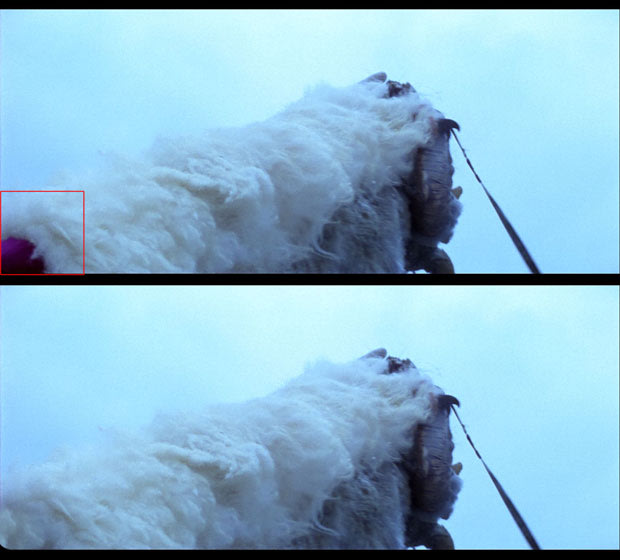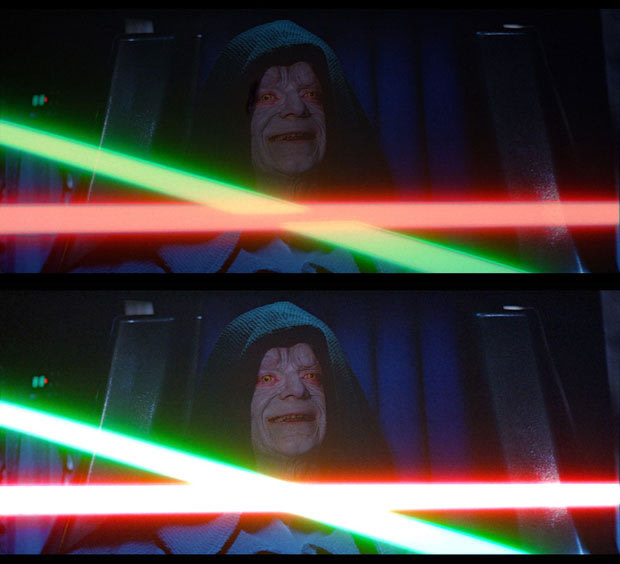George Lucas has been making changes to "
Star Wars" for nearly as long as it's been in existence. When the original film was re-released in 1981, the opening text was revised to include "Episode IV: A New Hope" as a subtitle. And he's continued to update the picture and sound in new versions of the movies, from 1997's "Special Editions" to the DVD release in 2004. So it shouldn't come as a surprise that when Lucas prepped both the original trilogy and the prequels for their debut on Blu-ray, he'd make some more adjustments to the films. And while fans have been upset about some of the changes made in earlier revisions -- most notoriously making Greedo shoot at Han Solo first -- the new editions actually address some things true "
Star Wars" geeks have complained about for years.
Watch the trailer for 'Star Wars' on Blu-ray >>
One fix in the new Blu-ray is a quick but embarrassing mistake in "
The Empire Strikes Back." In a scene early in the movie, Luke Skywalker is out patrolling on the ice planet Hoth when he's attacked by a giant monster called a Wampa. In one shot, the monster's arm sweeps in and hits Luke, but the puppeteer working the arm pushed it too far into frame. The fake arm was attached to a pole which managed to sneak into the picture, and it's been visible in the movie for 30 years. Digital effects artists at ILM extended the Wampa's arm, and on the Blu-ray the pole is no longer visible.
The Blu-rays also correct some issues from when the movies were converted to DVD. Fans were upset at the time that colors and brightness on the lightsabers were duller than they were in the theatrical releases. On Blu-ray, the saber blades have been restored to their vibrant colors with bright, white-hot cores, like in this shot from "
Return of the Jedi."
Probably the most visible change in the Blu-rays is actually in one of the newer films. When "
Episode I: The Phantom Menace" hit theaters in 1999, many fans complained about Yoda's physical appearance. A new puppet was created for the film with the intention of making Yoda look younger than he did in the original trilogy. But fans complained that the new Yoda just didn't look right, and apparently George Lucas agreed. In the following two prequels, Yoda was entirely a digital creation that more closely resembled the original character. And in the Blu-ray, the puppet in "Episode I" has been removed completely and replaced by a computer-generated Jedi. Here's a side-by-side comparison of the two.
In addition to the changes to the films, "Star Wars: The Complete Saga" is stuffed with extras for fanatics. There are two discs of archives featuring deleted and alternate scenes, concept art, and prop close-ups. Plus, there is an additional disc of documentaries showcasing the making of the films, the global network of fans, and spoofs of the saga from other shows and movies. All told, the set has over forty hours of bonus materials.
"
Star Wars: The Complete Saga" hits shelves on September 16.




